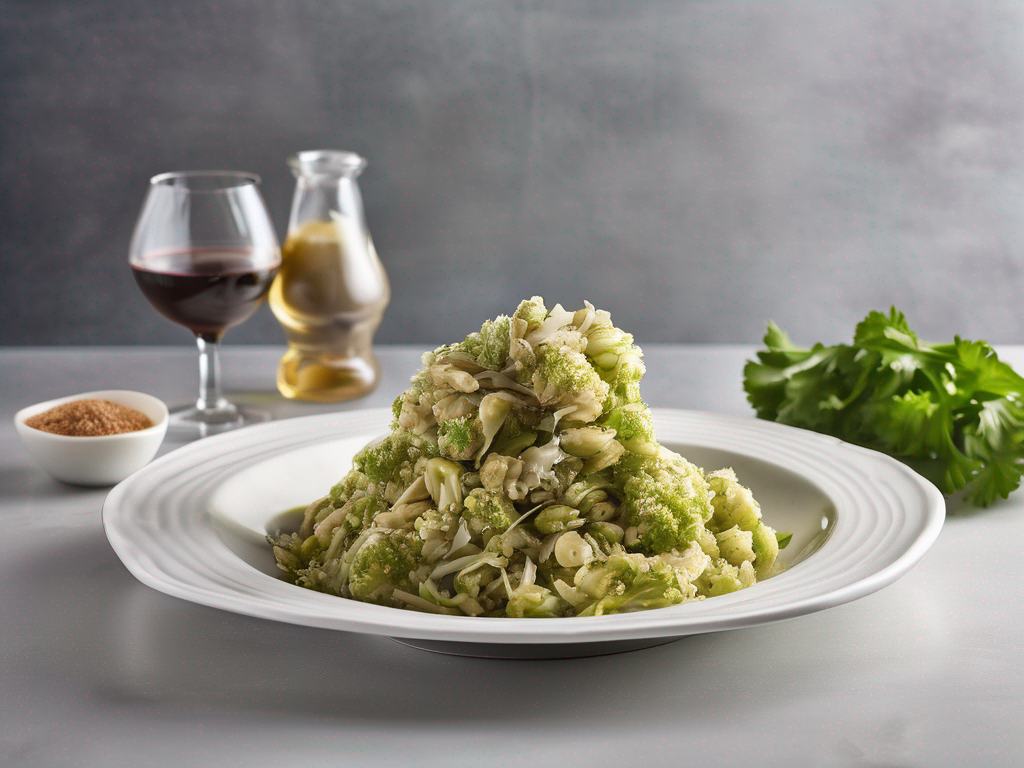
How to Tell if Angelica has Gone Bad
Get Your Free Food Safety Cheat Sheet
30 most common foods with instant answers. Print it and stick it on your fridge—completely free!
How to Tell if Angelica has Gone Bad
Angelica is a popular herb known for its unique flavor and medicinal properties. Whether you use it in cooking or herbal remedies, it's essential to ensure your angelica is fresh and safe to consume. In this blog post, we will discuss how to tell if angelica has gone bad, along with practical tips for proper storage and handling. (Angelica)
Signs of Spoiled Angelica
When it comes to determining if angelica has spoiled, there are several key indicators to look out for. Here are some common signs that your angelica may have gone bad:
1. Mold or Discoloration
- Check for any signs of mold growth on the surface of the angelica. Mold can appear as fuzzy patches or dark spots.
- Discoloration, such as a darkening or browning of the angelica, can also indicate spoilage.
2. Off Odors
- Fresh angelica should have a pleasant, aromatic scent. If you notice any musty, sour, or off-putting odors, it may be a sign that the herb has spoiled.
3. Texture Changes
- Spoiled angelica may feel slimy, mushy, or excessively soft to the touch. Any significant changes in texture could indicate spoilage.
4. Taste Test
- If you're unsure whether your angelica has gone bad, you can perform a taste test. Spoiled angelica will have a rancid or unpleasant taste.
Proper Storage Tips for Angelica
To prolong the shelf life of your angelica and maintain its quality, it's crucial to store it properly. Here are some practical tips for storing angelica:
1. Store in a Cool, Dry Place
- Keep angelica in a cool, dry pantry or cupboard away from heat and direct sunlight. Exposure to light and heat can cause the herb to deteriorate more quickly.
2. Use Airtight Containers
- Transfer angelica to airtight containers or resealable bags to protect it from moisture and air. Properly sealed containers can help prevent mold growth and preserve the herb's flavor.
3. Avoid Humid Environments
- Moisture is the enemy of dried herbs like angelica. Avoid storing angelica in humid or damp areas, such as near the sink or stove, as moisture can lead to mold and spoilage.
4. Label and Date Containers
- To keep track of the freshness of your angelica, label containers with the date of purchase or expiration. This can help you rotate your herb supply and ensure you use the oldest herbs first.
Safety Precautions When Handling Angelica
When handling angelica, it's essential to follow proper safety precautions to prevent contamination and ensure food safety. Here are some important tips to keep in mind:
1. Wash Hands Thoroughly
- Before handling angelica or any other food items, wash your hands with soap and water for at least 20 seconds to reduce the risk of cross-contamination.
2. Clean Cutting Surfaces
- Use clean and sanitized cutting boards and knives when preparing angelica. Avoid using the same cutting board for raw meats and other foods to prevent cross-contamination.
3. Check Expiration Dates
- If you purchase pre-packaged angelica, check the expiration date on the packaging to ensure it is still safe to consume. Discard any expired or spoiled herbs.
4. Store Away from Contaminants
- Keep angelica away from potential contaminants, such as raw meats, seafood, and strong-smelling foods, to prevent flavor transfer and spoilage.
Conclusion
In conclusion, keeping your angelica fresh and safe to consume requires proper storage, handling, and vigilance for signs of spoilage. By following the tips outlined in this blog post, you can ensure that your angelica retains its flavor and quality for longer periods. Remember to inspect your angelica regularly for any signs of mold, off odors, or texture changes, and discard any spoiled herbs promptly. Proper storage and handling practices are key to enjoying the benefits of angelica in your culinary creations and herbal remedies.
For more information on angelica, click here. (Angelica)
Authoritative Food Safety References
These agencies and university labs inform every tip and health precaution we publish.
USDA FoodKeeper – Cold Storage Guidelines
Official refrigerator, freezer, and pantry timelines maintained by the U.S. Department of Agriculture.
Visit USDA FoodKeeperFDA Produce Safety Rule & Grower Guidance
Field-to-fridge handling practices that prevent contamination of fruits, vegetables, and leafy greens.
Visit FDA Produce SafetyCDC Foodborne Illness Prevention Hub
Surveillance-backed guidance on pathogens, symptoms, and steps to reduce foodborne illness risk.
Visit CDC Food SafetyUC Davis Postharvest Technology Center
University research detailing optimal storage atmospheres for produce after harvest.
Visit UC Davis PostharvestPenn State Extension – Home Food Preservation & Safety
Peer-reviewed extension bulletins on safe canning, chilling, and reheating practices.
Visit Penn State ExtensionGet Your Free Food Safety Cheat Sheet
30 most common foods with instant answers. Print it and stick it on your fridge—completely free! Want more? Upgrade to the complete guide with 70+ foods.
Scan your food directly and get instant safety info using our AI-powered camera feature.